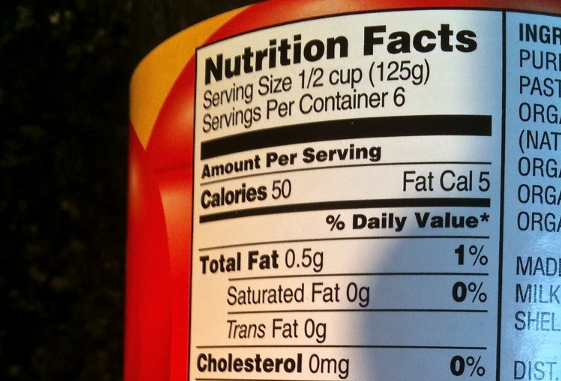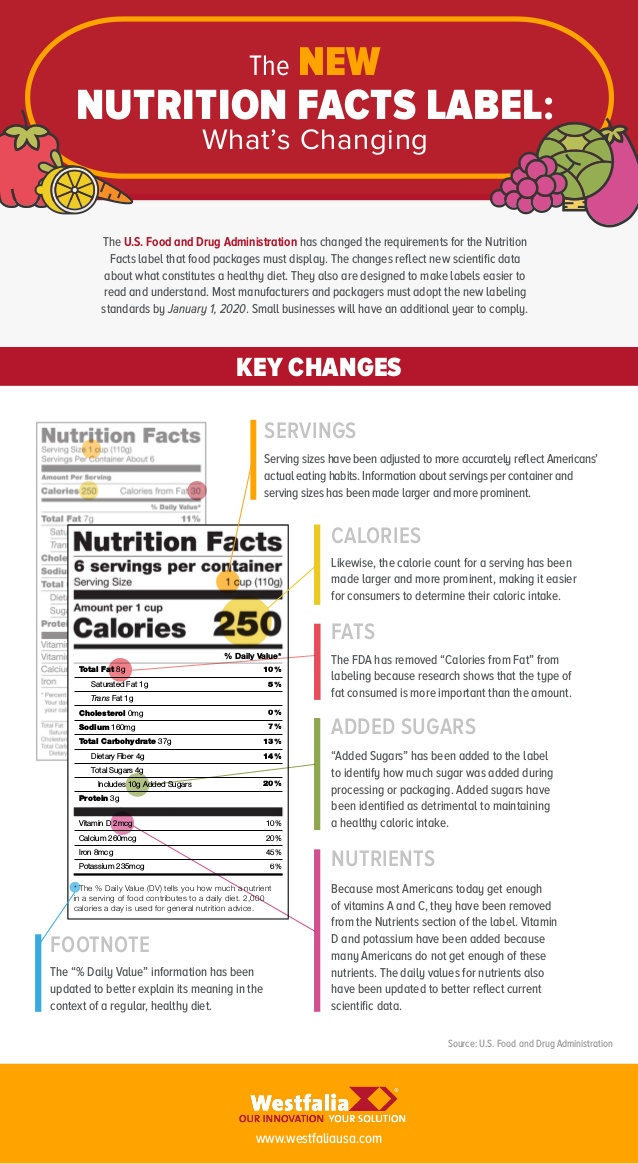
As a result of the craziness of COVID-19 and its many restrictions, you may have missed one of the biggest changes of the year. The Food and Drug Administration made significant changes to the Nutrition Facts Label. You won’t often see changes made to Nutrition Facts Label, which means that the changes that are made will be strictly meaningful. This post will provide a breakdown of the changes that were made as of late and how these changes impact the way consumers look at their food products.
The first change made is also coincidentally one of the first bits of information found on the label, serving size. While it’s true that everything is fine in moderation, most people were eating way too much of most products based on their previous serving sizes. The changes reflected in the most recent iteration of the label were meant to better reflect those portions. Think about it, just how often do you find yourself opening up a chip bag and totally ignoring that 25-chip recommendation? Now, while the portion is still not as healthy as it should be, the serving size information has been updated more a more accurate representation of the way people eat any given product. It’s important to always remain conscious as to what is an appropriate amount of any food product for yourself and your family.
An additional change that accompanies the serving size reconsideration is an adjustment to calorie counts. This change reconsiders how the calories per serving is calculated and how this information is displayed. Prior to these changes, caloric information shared the same font size as other information on the label. Now, the caloric totals are bold faced and are displayed with the largest font size on the label. These recent changes called for the removal of the calories from fat section of each label. This is a result of new findings from nutritionists related to the impact of each different type of fat to someone’s health. These findings indicate that the most important thing to track is the type of fat these products contain, so saturated, unsaturated and trans fats are now included.
The last section of the label to be changed in this sweep was the nutrients section that displays percentage daily values of each essential nutrient. Not only has the font of this entire section been sized up, but more nutrients have been included as well. For consumers, this means being able to more effectively identify products that can be working against them in certain regards. Consumers trying to avoid foods high in sodium or looking for more foods higher in vitamin A will have a much easier time now.
With these changes, along with some others not mentioned, more and more shoppers will find themselves capable to healthier food choices for themselves and their families. If you’re looking for additional information regarding the Nutrition Facts Label, or are curious about the remaining changes, be sure to review the infographic accompanying this post.

Author bio: John Hinchey is VP of Sales for Westfalia Technologies, Inc., a leading provider of logistics solutions for plants, warehouses and distribution centers. He has more than 20 years of experience in manufacturing and warehouse automation.

Leave a Reply